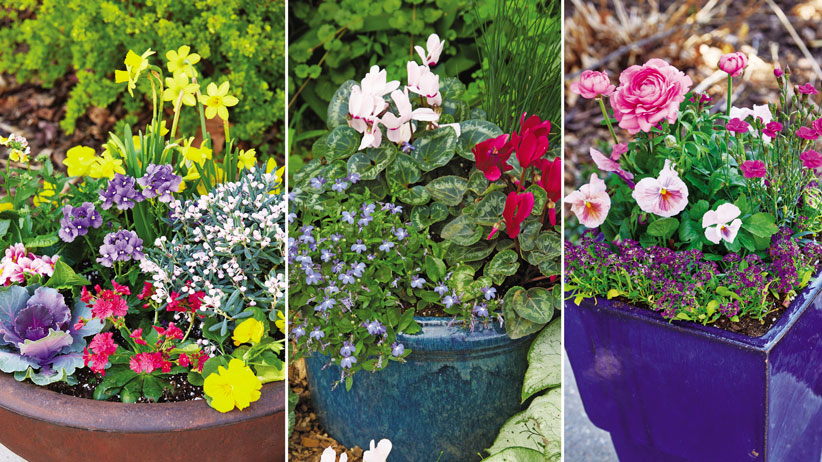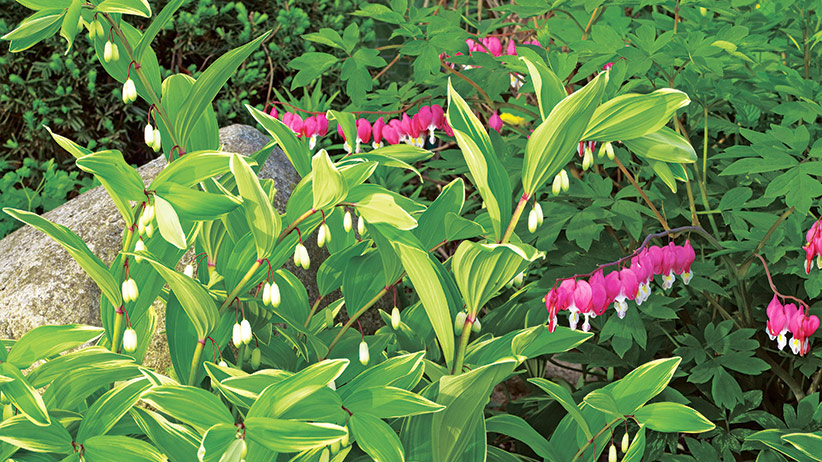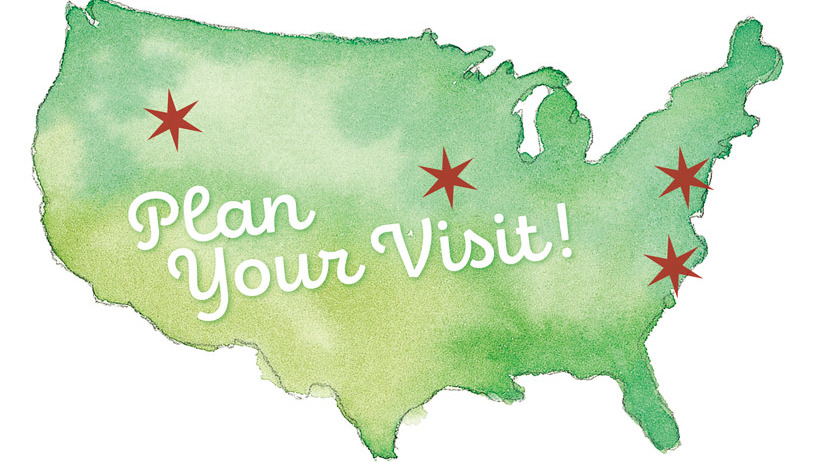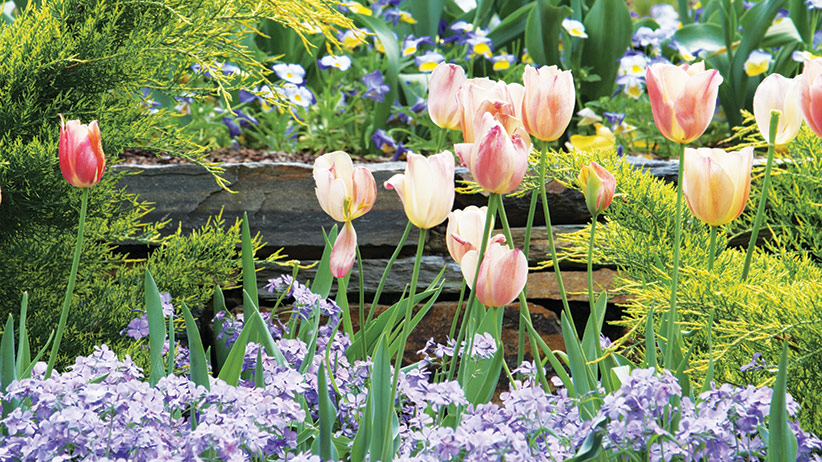
Sarah P. Duke Gardens
Durham, North Carolina
This horticultural treasure tucked into the campus of Duke University was the inspiration of medical faculty member and avid gardener Dr. Frederic M. Hanes in the 1930s. It now includes a diverse collection of plants tended by a staff of 17 and lots of volunteers.
Director of Horticulture Bobby Mottern calls the 52-acre property a “strolling display garden”. Approximately 5 miles of pathways lead you through woods, an Asiatic arboretum with a moss garden and Japanese tea house, a rose garden, a white garden and much more.
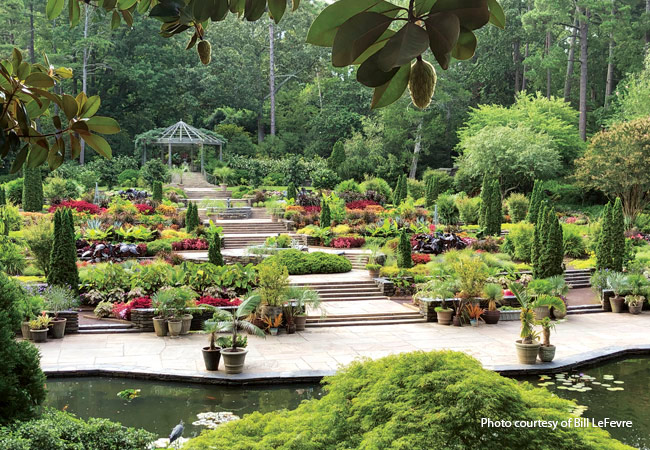
Tour the Terrace Gardens
The oldest part of the garden is also one of the most popular spots for visitors. The Terrace Gardens, designed by well-known landscape architect Ellen Biddle Shipman, opened in 1939. The terraced walls of this 12,000-square-foot Italianate-style garden are made from locally quarried stone and hold eye-popping seasonal plantings.
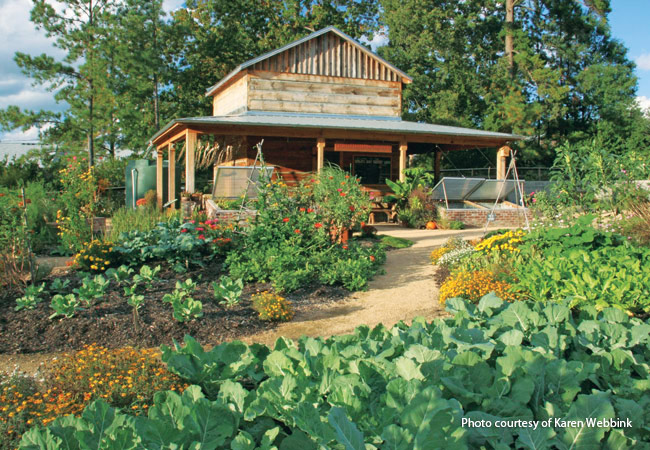
Visit the Charlotte Brody Discovery Garden
In the Charlotte Brody Discovery Garden you can learn all about organic vegetable gardening and see which fruits and vegetables grow best in North Carolina’s climate. It showcases an orchard, bee hives and a chicken coop, and houses the Burpee Learning Center, which was reconstructed from two historic tobacco barns.
Elsewhere at Sarah P. Duke, you can learn about other plants in the garden. Take the Midday Meander, a stroll through the garden focusing on stories and our relationship with gardens; or join a Botany Spotlight course, which focuses on a specific plant found in the gardens.
You Might Also Like:
Botanic Gardens To Visit in the U.S.
Coneflower Growing Guide
How to Start a Vegetable Garden

Explore the Piedmont Prairie
If you were to visit this part of the Southeast 300 years ago you would have found a terrain of rolling prairie and open woodlands. Though small portions survived throughout the region, the team at Sarah P. Duke Gardens wanted to help preserve and introduce this native landscape to visitors. So in 2015 they installed the Piedmont Prairie, which displays dozens of plants propagated from seed native to the area. This garden is at its peak from late summer to fall. Discover just a few of the perennials that grow there in “Native Plants of the Piedmont Prairie” below. Once the larger garden was established and thriving, the staff installed pocket prairies in the parking lots and along nearby roadsides. That inspired nearby corporations to add pocket prairies to their campuses as well.
Native plants of the Piedmont Prairie
A mix of perennials and grasses make up this native planting that provides plenty of food and shelter for visiting pollinators.
- Appalachian sunflower (Helianthus atrorubens)
Perennial; golden yellow flowers from later summer to fall; full sun to part shade; 3 to 4 ft. tall, 1 to 3 ft. wide; cold hardy in USDA zones 6 to 8 - Boneset (Eupatorium spp.)
Perennial; white flowers from late summer to fall; full sun to part shade; 1 to 4 ft. tall, 1 to 3 ft. wide; cold hardy in USDA zones 4 to 8 - Broomsedge (Andropogon virginicus)
Perennial; green leaves turn orange-red then purple by fall; full sun to part shade; 2 to 4 ft. tall, 1 to 2 ft. wide; cold hardy in USDA zones 3 to 9 - Indian grass (Sorghastrum nutans)
Perennial; upright clumps of blue-green foliage turn orange-yellow in fall; full sun; 5 to 7 ft. tall, 1 to 2 ft. wide; cold hardy in USDA zones 4 to 9 - Smooth coneflower (Echinacea laevigata)
Perennial; slender reflexed lavender petals in summer to fall; full sun to part shade; 36 to 60 in. tall, 12 to 18 in. wide; cold hardy in USDA zones 3 to 8
Plan a visit
Sarah P. Duke Gardens
420 Anderson Street
Durham, North Carolina
There’s no charge to visit the gardens but there is a $2 per hour fee to park.
Follow on Instagram: @sarahpdukegardens
Support Your Local Botanical Garden!
In addition to free visits and special member events, many botanical gardens offer reciprocity: Free or discounted entry fees to hundreds of public gardens across North America. Visit The American Horticultural Society website for a list of participating gardens.
You Might Also Like:
More Botanic Gardens to Visit in the U.S.
The Greater Des Moines Botanical Garden
Longwood Gardens








